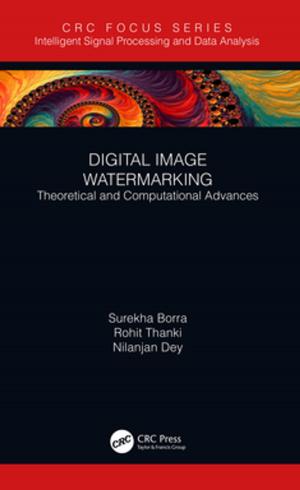Using Gis to Create an Agroclimatic Zone map for Soroti Distric
Nonfiction, Computers, Advanced Computing, Programming, Data Modeling & Design, Science & Nature, Science, Earth Sciences, Geography, Application Software, Computer Graphics| Author: | Balungi Francis | ISBN: | 9781386960232 |
| Publisher: | Visionary School of Quantum Gravity | Publication: | June 1, 2010 |
| Imprint: | Language: | English |
| Author: | Balungi Francis |
| ISBN: | 9781386960232 |
| Publisher: | Visionary School of Quantum Gravity |
| Publication: | June 1, 2010 |
| Imprint: | |
| Language: | English |
This project examines the use of GIS in creating an agro-climatic zone map. The map recognizes that the major aspects of climate that affect plant growth are moisture availability and temperature. The agro-climatic zones are therefore specific combinations of moisture availability zones and temperature zones. The project was undertaken following the variability of rainfall and recurrent droughts in the country that affects the lives of millions of people whose livelihood is mainly dependent on agriculture. The project is of much importance as it is aimed at showing areas that are climatologically suitable for particular crops and also as a guide to the work of planners and farmers. The goal of this study is to extrapolate empirical research findings from the map for agric-environmental experimental design and as a framework for assessment of the impact of climate change on Soroti region agriculture. The objectives were achieved using Idris32 software incorporating various methods. A temperature map was created from a derived relationship (regression equation) between temperature and elevation using tabular temperature and elevation data obtained from four weather stations. The temperature zones were created by reclassifyng the temperature map. An evaporation map was created using a published relation ship between evaporation and temperature. The moisture availability map was created by getting the ratio of rainfall map to evaporation. Moisture zones were created by reclassifying the moisture availability map. An agro climatic zone map was then created through a combination of the temperature zones with the moisture zones. The agro climatic zone map was classified using the Köppen and Thornthwaite agro climatic classification system. Finally crop growth in each zone was selected through a comparison of the temperature and moisture requirements for each crop based on published FAO data (climatic adaptability of crops) with the prevailing temperature and moisture conditions in each zone. The agro climatic zones were suitable for the growth of cassava, sweet potatoes, rice, sorghum, maize, millet and ground nuts. The results show that zones in the humid and dry-sub humid regions are highly suitable for agricultural production than those in the semi arid regions. The results are recommended for use on a lager scale only if they are accurate and representative of the climatic conditions in the selected region of the country. However if many alternatives are to be included based on the stated criterion, an Agro-Ecological Zone map should be created.
This project examines the use of GIS in creating an agro-climatic zone map. The map recognizes that the major aspects of climate that affect plant growth are moisture availability and temperature. The agro-climatic zones are therefore specific combinations of moisture availability zones and temperature zones. The project was undertaken following the variability of rainfall and recurrent droughts in the country that affects the lives of millions of people whose livelihood is mainly dependent on agriculture. The project is of much importance as it is aimed at showing areas that are climatologically suitable for particular crops and also as a guide to the work of planners and farmers. The goal of this study is to extrapolate empirical research findings from the map for agric-environmental experimental design and as a framework for assessment of the impact of climate change on Soroti region agriculture. The objectives were achieved using Idris32 software incorporating various methods. A temperature map was created from a derived relationship (regression equation) between temperature and elevation using tabular temperature and elevation data obtained from four weather stations. The temperature zones were created by reclassifyng the temperature map. An evaporation map was created using a published relation ship between evaporation and temperature. The moisture availability map was created by getting the ratio of rainfall map to evaporation. Moisture zones were created by reclassifying the moisture availability map. An agro climatic zone map was then created through a combination of the temperature zones with the moisture zones. The agro climatic zone map was classified using the Köppen and Thornthwaite agro climatic classification system. Finally crop growth in each zone was selected through a comparison of the temperature and moisture requirements for each crop based on published FAO data (climatic adaptability of crops) with the prevailing temperature and moisture conditions in each zone. The agro climatic zones were suitable for the growth of cassava, sweet potatoes, rice, sorghum, maize, millet and ground nuts. The results show that zones in the humid and dry-sub humid regions are highly suitable for agricultural production than those in the semi arid regions. The results are recommended for use on a lager scale only if they are accurate and representative of the climatic conditions in the selected region of the country. However if many alternatives are to be included based on the stated criterion, an Agro-Ecological Zone map should be created.















